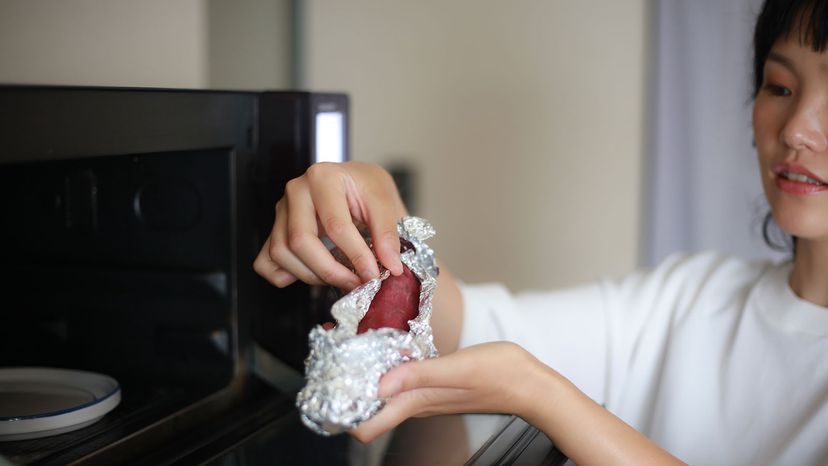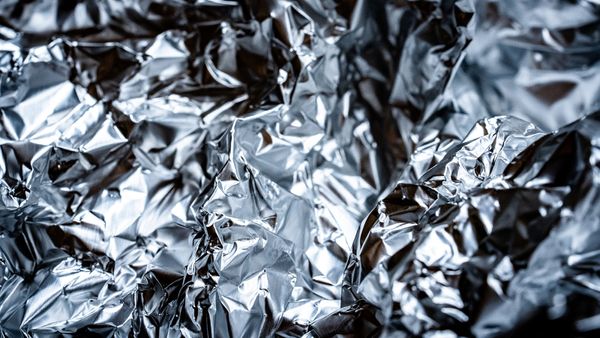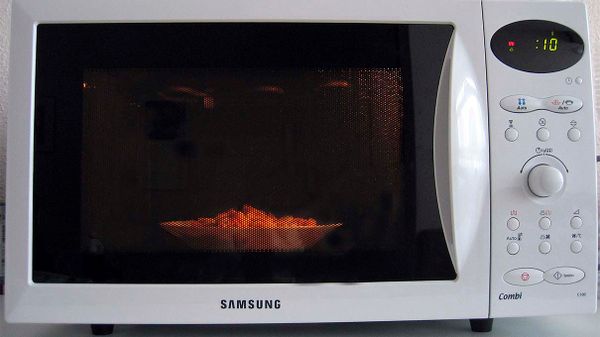
Aluminum foil is great to use when baking or roasting something in the oven. In the microwave? Not so much. At one time or another, we've all been told not to use metal products, especially aluminum foil, when cooking with a microwave oven. Stories of incredible explosions and fires usually surround these ominous warnings. Why is that? Let's take a look at how microwave ovens work to find out.
As incredible as microwave ovens are, the technology behind them is fairly simple. Microwave ovens use microwaves (i.e., radio waves) to heat food. In the case of microwave ovens, the commonly used radio wave frequency is 2,450 megahertz (2.45 gigahertz). Radio waves in this frequency range have an interesting property: Water, fats and sugars absorb them. When absorbed these waves are converted directly into atomic motion — heat. Microwaves in this frequency range have another interesting property: Most plastics, glass or ceramics don't absorb them, which is why you can touch the vessels without getting burned after they've been in the microwave oven. But what about metal?
Advertisement
The walls inside a microwave oven are actually made of metal. It turns out that a fairly thick piece of metal works a lot like a mirror. But instead of reflecting an image, it reflects microwaves. If you were to put food in a heavy metal pan and put it in the microwave, it wouldn't cook. The pan would shield the food from the microwaves, so the food would never heat up.
Tiny sharp pieces and thin pieces of metal are a different story. The electric fields in microwaves cause currents of electricity to flow through metal. Substantial pieces of metal, like the walls of a microwave oven, can usually tolerate these currents without any problems. However, thin pieces of metal, like aluminum foil, are overwhelmed by these currents and heat up very quickly. So quickly in fact, that they can cause a fire. Plus, if the aluminum foil is crinkled so that it forms any sharp edges, the electrical current running through the foil will cause sparks. If these sparks hit something else in the oven, perhaps a piece of wax paper, you could be reaching for the fire extinguisher, though this is not very likely. Sparks will also fly if you put a china plate edged in gold or silver in the microwave unless the dish says it is microwave safe.
The U.S Food and Drug Administration does note that small amounts of aluminum foil can be used to shield areas of food (for instance, chicken drumsticks) to prevent overcooking. Just make sure that the foil is no closer than 1 inch (3 centimeters) to the oven wall and the aluminum foil is shaped smoothly to the food so no sharp edges stick out. It's best to use smooth foil, that's new rather than old wrinkled aluminum foil.
Even if you follow these directions, stay close your microwave oven so that if sparks start to fly you can turn it off immediately and remove the aluminum foil.
Advertisement


